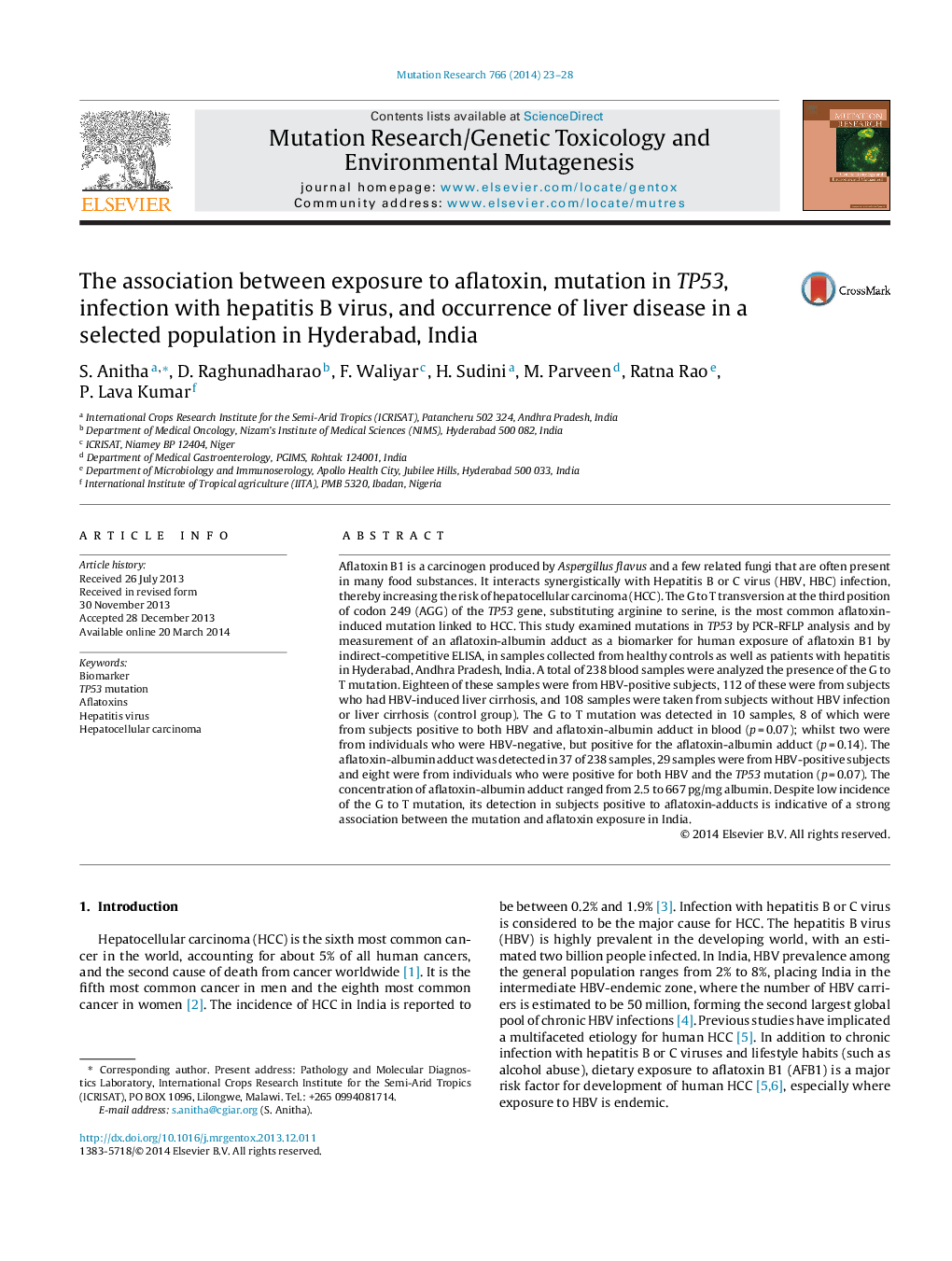| Article ID | Journal | Published Year | Pages | File Type |
|---|---|---|---|---|
| 2147974 | Mutation Research/Genetic Toxicology and Environmental Mutagenesis | 2014 | 6 Pages |
•Aflatoxin-lys biomarker detected in 37 of 238 individuals.•10 samples had p53 mutation associated with the presence of aflatoxin-lys in human blood.•The individuals with mutation were having decompensated liver disease with the high (>76 pg/mg of albumin) concentration of aflatoxin and also had High MELD and CTP score.•The severity of the liver disease with HBV weakly correlated with the presence and the concentration of aflatoxin-albumin adduct as well as p53 mutation at codon 249 (p = 0.07).
Aflatoxin B1 is a carcinogen produced by Aspergillus flavus and a few related fungi that are often present in many food substances. It interacts synergistically with Hepatitis B or C virus (HBV, HBC) infection, thereby increasing the risk of hepatocellular carcinoma (HCC). The G to T transversion at the third position of codon 249 (AGG) of the TP53 gene, substituting arginine to serine, is the most common aflatoxin-induced mutation linked to HCC. This study examined mutations in TP53 by PCR-RFLP analysis and by measurement of an aflatoxin-albumin adduct as a biomarker for human exposure of aflatoxin B1 by indirect-competitive ELISA, in samples collected from healthy controls as well as patients with hepatitis in Hyderabad, Andhra Pradesh, India. A total of 238 blood samples were analyzed the presence of the G to T mutation. Eighteen of these samples were from HBV-positive subjects, 112 of these were from subjects who had HBV-induced liver cirrhosis, and 108 samples were taken from subjects without HBV infection or liver cirrhosis (control group). The G to T mutation was detected in 10 samples, 8 of which were from subjects positive to both HBV and aflatoxin-albumin adduct in blood (p = 0.07); whilst two were from individuals who were HBV-negative, but positive for the aflatoxin-albumin adduct (p = 0.14). The aflatoxin-albumin adduct was detected in 37 of 238 samples, 29 samples were from HBV-positive subjects and eight were from individuals who were positive for both HBV and the TP53 mutation (p = 0.07). The concentration of aflatoxin-albumin adduct ranged from 2.5 to 667 pg/mg albumin. Despite low incidence of the G to T mutation, its detection in subjects positive to aflatoxin-adducts is indicative of a strong association between the mutation and aflatoxin exposure in India.
